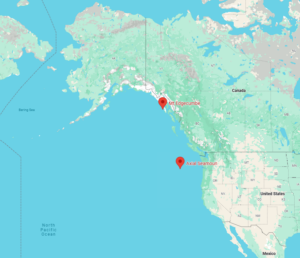
The Rising Tide of Volcanic Activity: What to Expect from 2025 Onwards
As we move deeper into the 2020s, the Pacific Rim is stirring with geological unrest. At Extreme Investor Network, we’ve been closely monitoring trends related to solar activity and how they correlate with volcanic eruptions—and the findings are intriguing.
What’s Happening with Solar Cycles?
In 2019, experts predicted a significant increase in volcanic activity, particularly on the West side of the Pacific Rim, and much of this can be traced back to solar activity cycles. Currently, we are in Solar Cycle 25, which is expected to peak between late 2024 and mid-2025. This cycle is already exhibiting characteristics that suggest it may be the most intense since comprehensive record-keeping began in 1755.
Recent observations indicate that solar activity is performing beyond many forecasts, leading some scientists—including those at NASA—to speculate that we might be entering an exceptionally potent cycle, potentially termed a "Panic Cycle." Given that the previous Solar Cycle 24 was one of the weakest on record, the transition we’re observing speaks to possibly higher volatility ahead.
The Link Between Solar Minimums and Volcanic Activity
Historically, solar minimums coincide with increased volcanic activity. Evidently, during these periods, eruptions may become more frequent, contributing to what is known as Volcanic Winter—a phenomenon that occurs when ash from eruptions creates a veil over the sun, leading to dramatic climatic changes. This was notably evident in 1816, often referred to as “the year without a summer,” which followed the catastrophic eruption of Mount Tambora.
At Extreme Investor Network, our advanced correlation models indicate that this trend is likely to continue. Current patterns suggest that we are on the brink of an uptick in volcanic activity, particularly in regions like the Aleutian Islands off the West Coast of the U.S. As the solar wave peaks, we should watch for significant events that could lead to climate anomalies similar to historical volcanic winters.
What Does the Future Hold?
While we anticipate increased volcanic activity, the future isn’t without complications. The next solar cycle, Solar Cycle 26, which is projected to begin around 2029, may pose additional risks. Researchers predict this cycle could fall into a state reminiscent of the Maunder Minimum, a period known for its cold temperatures and accompanying societal upheaval.
The implications of heightened volcanic activity and changing climatic conditions could be far-reaching. Increased ash fallout not only blocks sunlight and disrupts agriculture, but it can also escalate health risks by affecting food production and promoting nutrient deficiencies.
The Bigger Picture
As we look to the coming years, the implications of volcanic activity tied to solar cycles will likely shape both our environment and economies profoundly. At Extreme Investor Network, we are committed to providing our readers with insights into these overlapping phenomena to help them navigate potential investments in commodities and sectors likely to be impacted.
Stay informed by subscribing to our blog, where we strive to bring clarity to complex economic trends in a rapidly changing world. Together, let’s prepare for the challenges—and opportunities—lying ahead.
By placing the spotlight on these crucial connections and offering actionable insights for our readers, Extreme Investor Network is your go-to source for understanding the intricate web between solar activity and volcanic occurrences, as well as their implications on our economy and society.

